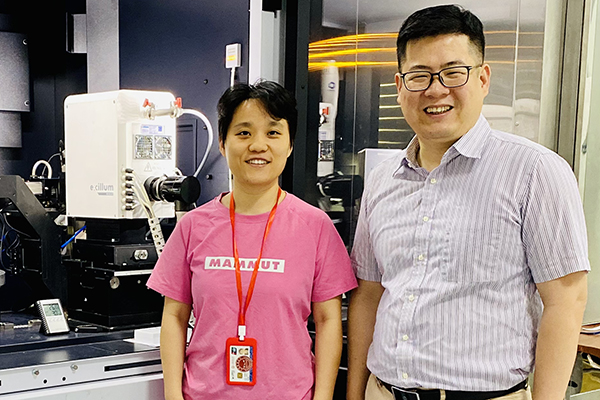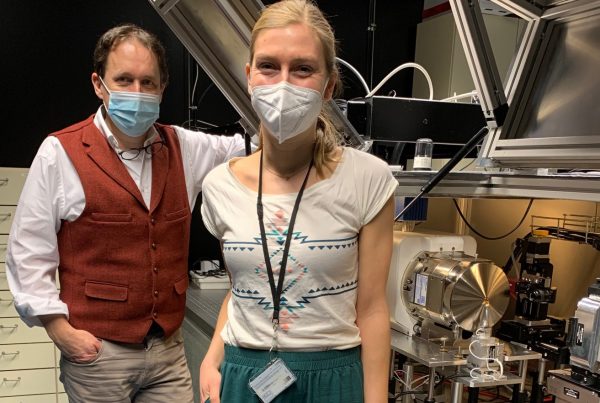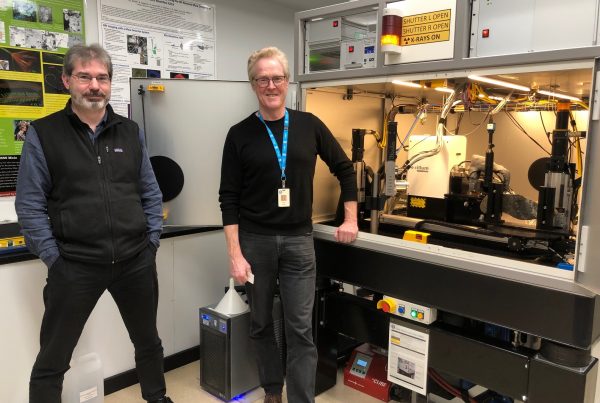Open access to advanced biomaterial research
Launched in 2022, the BioPACIFIC MIP X-ray Diffraction Platform vastly expands access to state-of-the-art SAXS and WAXS instrumentation for a broad research community in Southern California. The new beamline, custom-built to enable new users to achieve synchrotron-level performance with less than an hour’s training, will be used to accelerate the characterization and synthesis of advanced bio-derived polymers.
Interviewees
Dr. Youli Li, Group Leader
Phillip Kohl, XRD Specialist
Institute
University of California, Santa Barbara, USA
BioPACIFIC NSF Materials Innovation Platform, USA
Method
SAXS and WAXS
Application
High-throughput characterization of biopolymers and nanostructures
X-ray source
MetalJet D2+
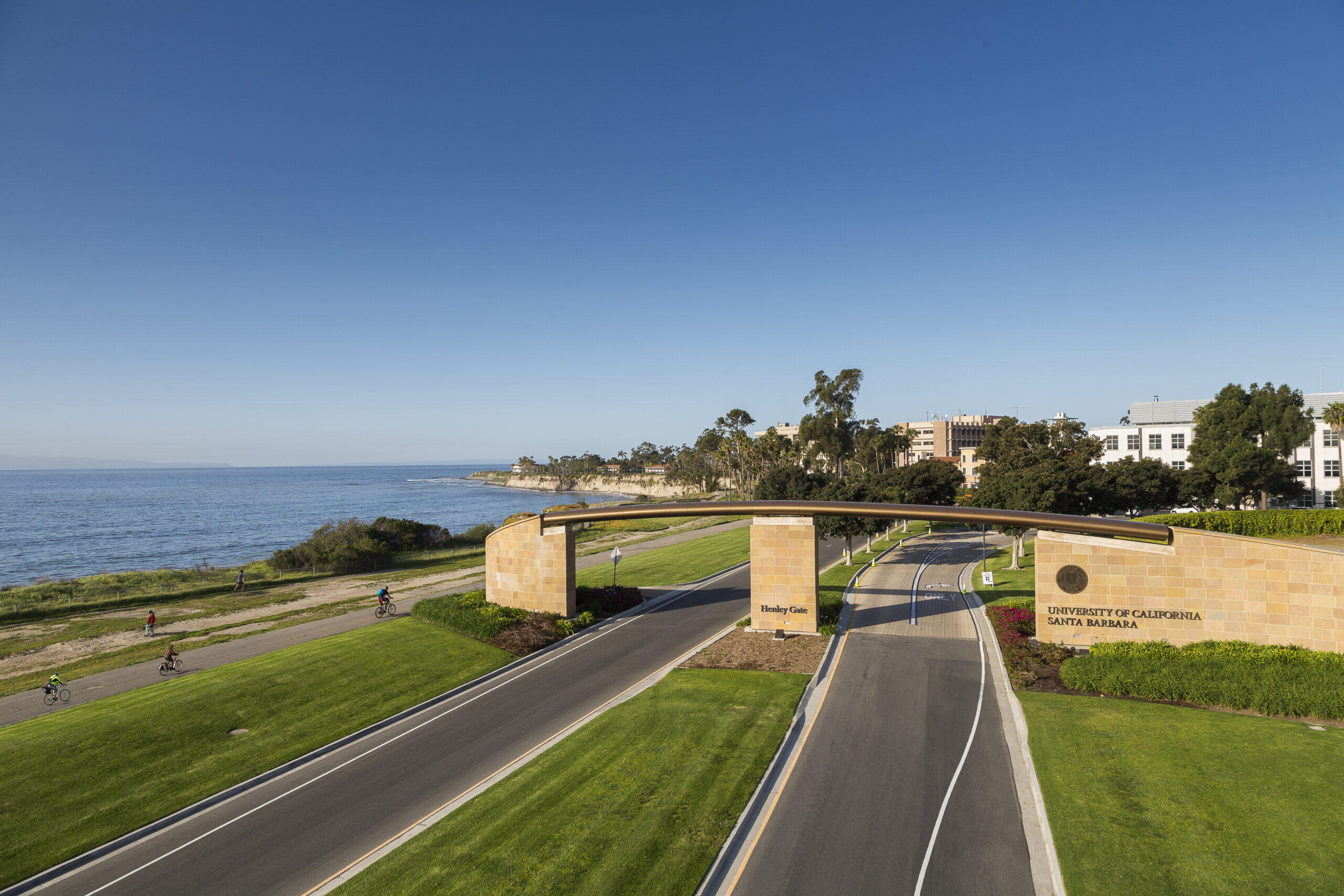
University of California, Santa Barbara, USA
Last year, Dr. Youli Li opened the first online bookings for the latest addition to his lab: an advanced small- and wide-angle x-ray scattering (SAXS-WAXS) beamline for high-throughput characterization of biopolymers and nanostructures. Part of the BioPACIFIC Materials Innovation Platform, the instrument was custom developed by Dr. Li and his research team using a MetalJet D2+ liquid gallium X-ray source. The team calculates that the high flux of the X-ray source, combined with a large-area pixel array detector, enables data collection with a 50x increase in speed or sensitivity, compared to conventional SAXS equipment.
Beam time on-demand
The material scientists, chemists and physicists who will use the new platform generally aim to accelerate throughput in their research focused on synthetic biology, chemical synthesis and advanced biomaterials characterization. Today, these users typically fall into one of three categories: those who currently lack access to SAXS equipment, those who use commercial SAXS systems, and those who rely mainly on synchrotron beam time.
“Synchrotron users were the first to bite,” says Dr. Li. “Most of them don’t even need the brightness of a synchrotron, so the ability to book online, drive over to the lab and start an experiment within a few hours is hugely attractive. This turnaround time is simply unheard of for these types of experiments.”
“For synchrotrons you would have to plan the same experiment a year in advance,” adds Phillip Kohl, XRD Specialist, “and then you only get one shot to make it work.”
To date, the new platform has been used on a daily basis, switching repeatedly between low- and high-power states with a high degree of repeatability. “Initially, we had expected that the source would have a lot of downtime due to instability or heavy maintenance,” says Dr. Li. ““But we’ve been pleasantly surprised by a much higher uptime, and the system has been used more than 80% of the time so far. After more than a year and a half of continuous operation, we haven’t required a single service visit from the factory personnel. Our in-house staff takes care of all maintenance and repair tasks by following the instruction manual, along with an occasional call to the Excillum support line.”
This turnaround time is simply unheard of for these types of experiments.”
Dr. Youli Li, Group Leader
After more than a year and a half of continuous operation, we haven’t required a single service visit from the factory personnel.”
Dr. Youli Li, Group Leader
Accelerating the iteration loop
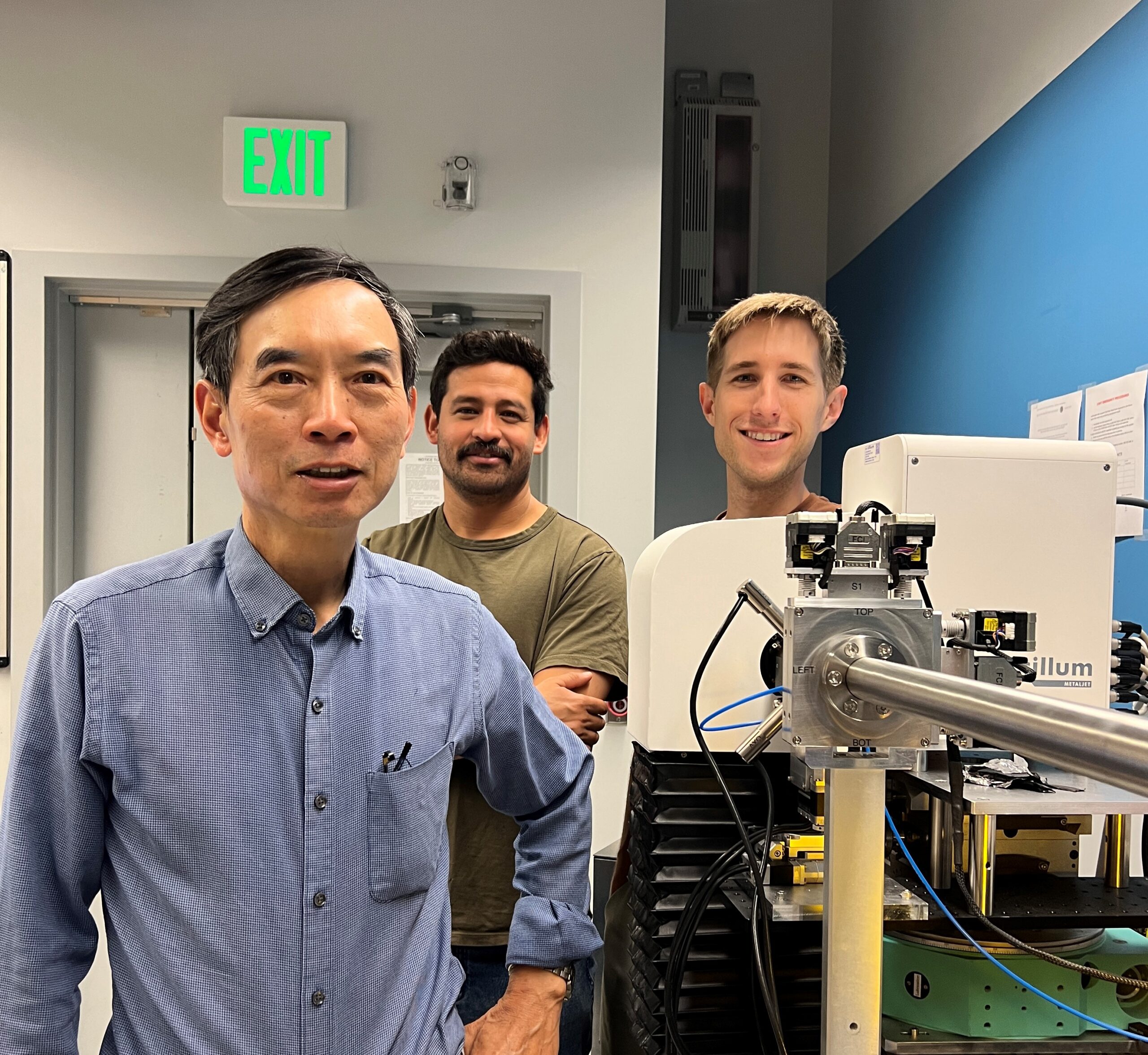
From left to right: Youli Li, Group Leader; Miguel Zepeda-Rosales, R&D Engineer; Phillip Kohl, XRD Specialist.
This high accessibility and availability open up new opportunities for researchers to design their research programs for more rapid iteration of experiments, particularly when measuring weakly scattering biological and polymeric samples where a high-flux synchrotron beamline was previously required.
For users accustomed to commercial home-lab SAXS equipment, the BioSAXS platform offers a remarkable increase in capabilities. “Typical users need about ten minutes on the BioSAXS beamline,” explains Phillip. “The equivalent on most in-house SAXS machines would be sixteen hours, which is just not reasonable. So, it’s hard to overemphasize the difference that a brightness improvement of two orders of magnitude really makes.”
Streamlining the user experience
One of the primary aims of the instrument designers was to enable even those who are new to SAXS and synchrotron research to perform experiments on the machine. A great deal of effort was therefore put into user experience design, to make setup and configuration as simple as possible.
“We knew that user training could be a big obstacle with this type of advanced system, so we decided to realize a different type of approach,” says Dr. Li. “It’s not just that our approaches to instrument design and how to integrate the MetalJet for SAXS were unique. It’s also a unique platform instrument that’s based on the workflow setup for a synchrotron, where we really focused on making the user interface easy to navigate.”
“Training for a new user typically takes thirty to forty minutes, so I’d say we succeeded in this,” adds Philip.
A platform for open innovation
By offering some of the world’s most advanced SAXS and WAXS capabilities in a ready-to-use benchtop format, Dr. Li hopes that researchers will be free to explore innovative ways to accelerate their process of new material discovery. “This is one of the unique aspects of the platform we’re developing here,” says Dr. Li. “It aims to offer broad access to a wide range of research groups, so no one should feel intimidated by the equipment. If one institute just needs 20 minutes, they can book it. If another needs, say, a time-resolved study that takes days, then they book a few days.”
A unique example of the latter case is, in fact, already under development in the form of new sample environments combining kinetic mix-SAXS and optical microscopy measurements for examining the mixing of complex fluids. The addition of custom-developed mixing devices compatible with both methods is aimed toward enabling what BioPACIFIC describes as “assembly and structuring in molecular systems resolved across an unprecedented range of length and time scales.”
Designing tomorrow’s sustainable materials
The aim of NSF BioPACIFIC MIP, funded by the National Science Foundation in collaboration with UC Santa Barbara and UCLA, is not only to promote fundamental science, but to create materials that may soon replace traditional petrochemical-based methods. Starting with bio-derived building blocks and polymers from yeast, fungi and bacteria, the hope is to facilitate data-driven discovery and scalable production of next-generation polymers that can contribute to solving the worlds’ environmental crisis at scale.
“We don’t just want to make high-performance materials,” explains Dr. Li. “We want to use synthetic biology to discover and design materials that are inherently biodegradable.”
At Dr. Li’s lab, this journey starts by providing the widest possible access to the right scientific expertise, computational and simulation capabilities, and advanced instrumentation. “And here one of the keys is, again, the high brightness of the MetalJet source,” says Dr. Li. “To probe these biomolecular structures and polymers that are generally disordered, researchers can now use the same exposure to get the same sensitivity as a synchrotron, which is a huge improvement over the commercial systems available today.
So far, all the visitors have been super excited,” concludes Dr. Li enthusiastically. “I think this will open many people’s minds.”
So far, all the visitors have been super excited, I think this will open many people’s minds.”

